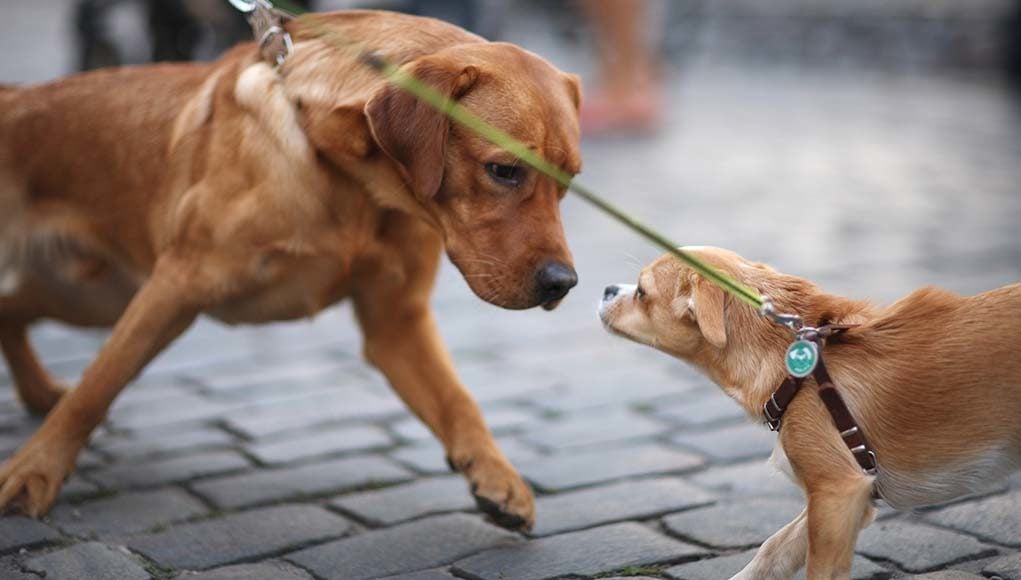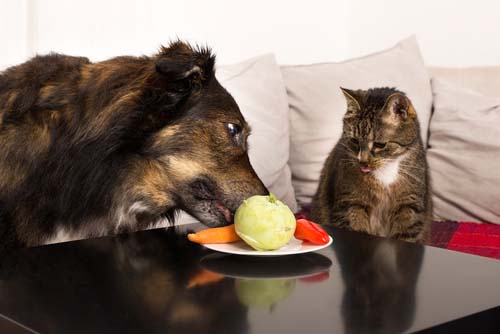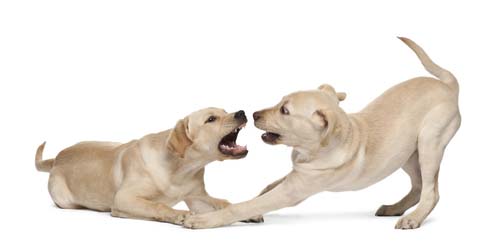To make a smooth introduction of a new dog to your existing pets, certain precautionary measures must be followed. With appropriate planning and guidance, your new dog will quickly get accepted by the resident pet and become an equal part of the family.
Table of Contents
What to Watch Out For
Nobody can predict how animals will behave during the introduction process, but some things are almost always to be expected.
Stress. When a new dog is being introduced into a new home, it may cause him a certain amount of stress. Some dogs may get more stressed and anxious than others, but majority will experience a level of mild “shock”, which is unavoidable. Your first goal will be to recognize signs of stress and reduce the amount of anxiety for the new dog.
Time. People tend to socialize fast and in large groups but the opposite should be done with dogs. A quiet environment and a slow drip-like process of introducing people and animals to a new dog is essential. Think long-term, meaning that this process may take from a few weeks to several months, and you should expect that and stay patient.
Dominance. The biggest danger of introducing a new dog to a resident pet, whether cat or dog, is either of them trying to establish dominance over the other. This is a normal animal behavior that has been demonstrated in studies and not something you can prevent. However, you can control how the process goes to avoid any problems, fights, injuries and establishing bad blood between the pets.
With these three things in mind, below are a few tips for introducing a new dog to your resident pets, and how to ensure the process goes smoothly.
10 Tips for Introducing a New Dog to Existing Pets
1. Make a Match
When you're only in the stage of considering adding a new dog to your household, choose a breed that has a similar temperament as your current resident pets, whether dogs or cats. For example, some breeds are known to be friendlier with felines.
Remember to take into account everybody's activity levels, too. Most pets are highly dependent on their routine and habits, and the less invasive new dog's addition is on the current schedule, the more likely you'll have a successful transition process.
2. Separate the New Dog
As noted above, you need to use a “drip-like” process. Give your new dog and current pets some time and space to gradually adjust to the changes. This is important for the new dog to get used to his new surroundings, pets and you.
Have a separate room for your new pet where he can rest if things overwhelm him. This can take any number of days for dogs. Put a dog bed for him in there, provide new bowls for food and water, new dog toys and don’t forget to spend some time with your new pet without overwhelming him with attention.
Once the new dog becomes accustomed to his room and the general environment, begin encouraging him to walk around the house to familiarize with the rest of the household. Your new pet will explore, sniff around and get familiar with the scent of your resident pets and the surroundings.
3. Use Scents for Introduction
Animals, especially dogs, have a great sense of smell and they use it to learn about the world around them. Getting your new dog used to the scent of resident pets is the most important step in the introduction process.
Before you introduce your dog to existing pet and allow them to smell each other live, you should first smelly items – toys or blankets – that have the other pet’s scent on them. This allows both pets get familiar with each other's scent even before they officially meet.
4. Use Pheromones
Pheromones can help you make the pet introduction go smoother. They are released into the environment by all animals and they have an effect on the behavior of other animals. Studies have shown how we can effectively use pheromones to reduce stress in dogs.
There's commercially available dog pheromones which you can spray into the environment to relax and calm your new dog if he becomes too aroused, anxious or temperamental. You can also use calming collars which will ease your pet. You can do the same with your resident pet to keep them both calm during the introduction.
5. Use Food
Using food is the best way to create positive feelings for your pets, both new and existing, before the introduction. Feed your new dog and your resident pet in separate locations but in close proximity. This will help the animals to associate something pleasurable with each other’s smell. Repeat this for a few days before you actually introduce your new dog to the resident pet.
6. Use Positive Reinforcement
Using praise, playtime or treats as a reward for good behavior will make the introduction process smoother, especially for very anxious animals. However, note that if you are doing a dog-to-dog introduction, this can create a sense of competition in them from the start and cause some problems in the future. Playtime can also increase the level of excitement in dogs, which can, in turn, increase the nervousness.
Use positive reinforcement based on your pet’s expected reaction to it. In addition to positive reinforcement, use negative reinforcement if one of the introducing parties displays aggressive behavior. Separate them immediately for some time.
7. Keep Up the Routine
You need to maintain a regular schedule and routine of your resident pets and start creating a routine for the new pet after a few days. This includes feeding, exercising, playing and potty time.
Schedule and routine will reassure your resident pets that nothing is changing with the new arrival, which will keep them calm and composed when the time of the introduction comes, and get your new dog onto the same schedule to avoid stress.
8. Think About Safety
If you are introducing your new dog to a resident dog, have them both on leashes and held by two different people. That way you can maintain the control of the interaction. It is also advisable to choose a location that is neutral, such as parks or backyard, in order to avoid any sense of dominance often implied by the location.
Social dominance is one of the key factors when it comes to introducing a dog to a new household. Studies have shown that there's an inherent hierarchy among dogs, and they will have to figure it out by themselves. But you'll have to ensure this is done in a controlled and safe environment to avoid any problems.
If you are introducing your new dog to a resident cat, the dog needs to be on a short leash. You can also exercise your dog before the introduction to make sure that his energy levels are depleted. You can also feed him beforehand to make him feel relaxed.
If you already have more than one pet in the home, introduce every resident pet to the new dog individually and all as a separate cases of introduction. Keep following these tips for each new introduction.
9. Use Crates and/or Gates
In more risky introductions, such as introducing two dogs that are both temperamental, dominant and have tendency to be aggressive, you may need to add an additional step before allowing any direct contact.
A good way to let both dogs see, smell and barely touch each other is by using crates or pet gates. If using a pet crate, have a new dog inside of it as you allow your existing dog or cat approach the crate. If using dog gates, find a space in your home when you can place it and have both pets on either side of it; observe how they react and interact with each other.
10. Be Patient
Be aware that introducing new dogs to existing pets takes time. If you're lucky, both pets may become best buds immediately, but generally, this process requires patience, and there's really no specific number of days that will work for all pets.
Sometimes, it can take only a few days, but it is not unusual for the adjustment period to last for a few weeks. In some extreme situations, it can even take a few months.
Introduce your new dog to your resident pet in stages: start with the scent, then go to visual introduction through a crate, slightly open doors and end it with a supervised introduction.
Go only as fast as both pets feel comfortable and have separate rooms prepared where either one of your pets can go to if they feel threatened or scared at any point. You should never try to force the interaction; they must be introduced on their own terms.
READ NEXT: How to Introduce a Dog to a Cat (step-by-step)


















